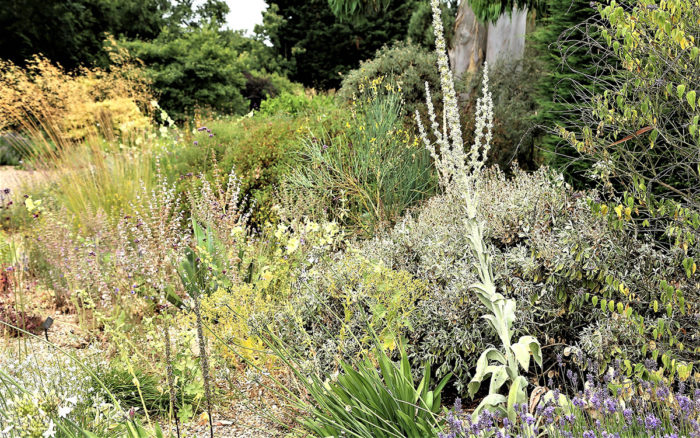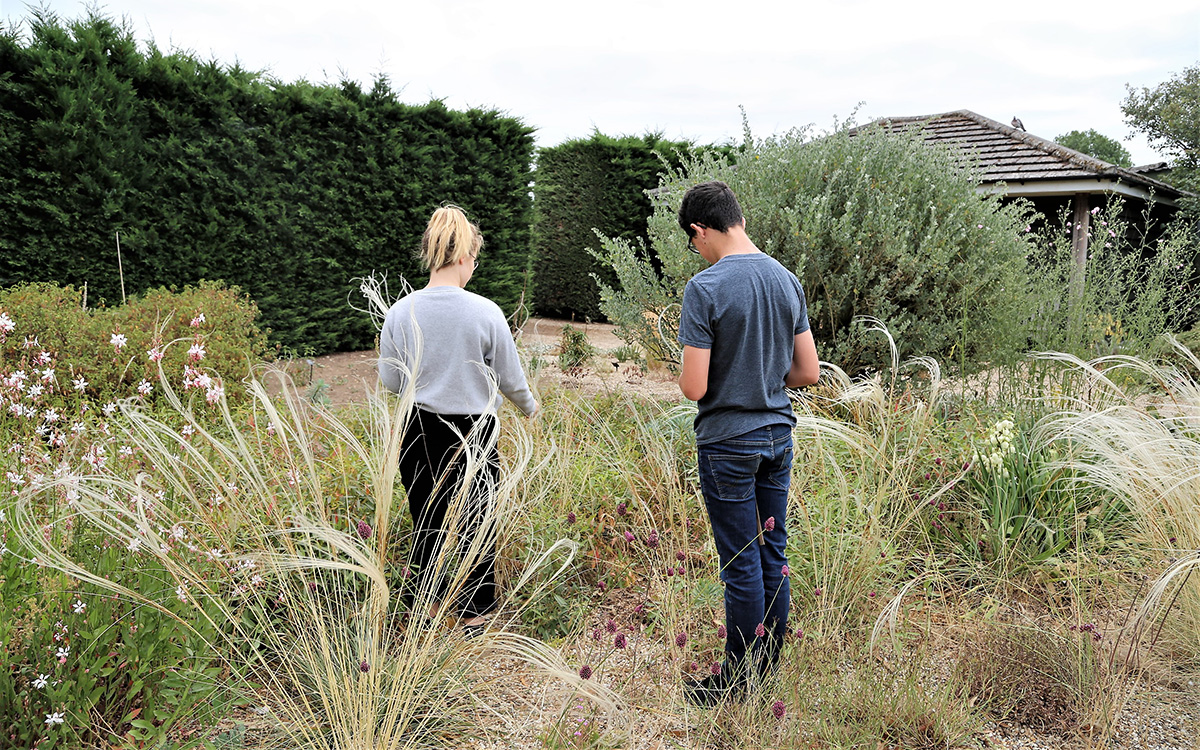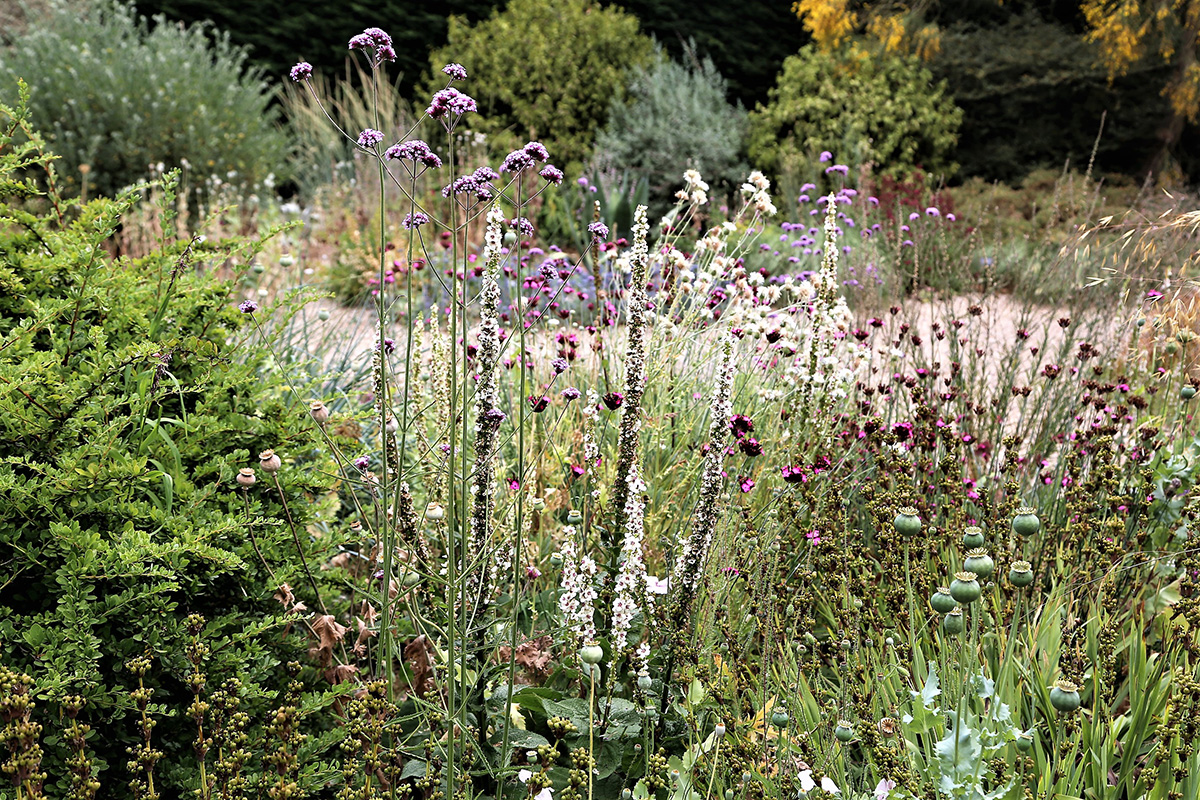
When the summer heat starts in the Pacific Northwest, I reflect at my choice to turn my front garden space into a “summer-dry garden.” I like this term better than “xeriscaping” or “drought-tolerant gardening” because we do get a lot of rain. This garden style relies on tough, drought-resistant plants that can handle the wet, cool winters and dry, hot summers the Pacific Northwest throws at them. It is a landscape design style that incorporates plants from similar climatic zones from around the world to create an interconnected and cohesive design. Some of these similar regions include the Mediterranean, the West Coasts of North and South America, parts of Australia and New Zealand, parts of Asia, and a very small area of South Africa. What an amazing and biodiverse plant collection that can be made from those areas. A few years ago, I was even fortunate to visit Beth Chatto’s Gravel Garden in Colchester, England.

Every plant for itself
This is the driest area in England and has very similar seasonal conditions to Seattle’s Zone 8b. Beth Chatto could be considered the founder and godmother of the summer-dry gardening style, with her decades of research on plants and their environments. Her extensive research set the foundation for this style of garden design that is both beautiful and sustainable. Beth has said of her garden, “This garden was not to be irrigated in times of drought. Once established, the plants must fend for themselves or die.” That really speaks to me and my willingness to push the envelope. Every year I keep telling myself about the plants in my garden, “Let’s see if they survive!” Luckily, most of them do. I water newly installed plants during the first year per Beth’s instructions, but after that they are left to fend for themselves as Beth would have wanted.

Siting correctly reduces maintenance
Like many designers, Beth Chatto was a proponent of the “right plant, right place” mantra. This is a great mantra to follow. Why waste precious resources such as water, fertilizer, or time to create and maintain an unsustainable garden? While no garden is maintenance-free, I have found that my summer-dry garden tasks are less intensive but more spread out through the year. These smaller, spread-out tasks help create a better connection to the garden by reinforcing the task of observation, and they help me closely watch what is happening seasonally.

Do some summer reading
I visited Beth’s garden in July 2018. It was one of the driest summers on record. Notwithstanding, the garden looked amazingly alive and full of bright flowering perennials, trees, and shrubs. Having reread Beth’s book The Gravel Garden, I was super excited to finally set foot in the actual gravel garden. (The book has been rereleased with an updated title, Drought-Resistant Planting: Lessons from Beth Chatto’s Gravel Garden, which provides greater detail of the plants she used and recommended.) Either book is a great addition to your home library; the latter has more updated plant names. I reference my copy at least two or three times a year.

Bringing design principles home
I really enjoyed the journey that this garden took me on; it felt like a rich and beautiful garden in the Mediterranean. It is made to look simply designed, but as you investigate, it is complex with many layers of plants. I have tried to incorporate that feeling in my much smaller garden. The relaxed naturalistic style of loose plantings, lots of self-seeding annuals and perennials, and beautiful yet tough evergreen trees and shrubs, is extremely beautiful. I really love the similar and contrasting textures that this garden offers, which is something I have tried to recreate in my own garden.

I hope this article and my photos inspire you to visit this amazing garden not only for the Gravel Garden itself but also for the other amazing gardens on Beth’s property. In part 2, I will go into how I designed my summer-dry garden and my clients’ gardens with inspiration from Beth Chatto.
—Jason Jorgensen is a landscape designer in Seattle. Photos of Beth Chatto’s Gravel Garden by Jason Jorgensen.


















Comments
Log in or create an account to post a comment.
Sign up Log in